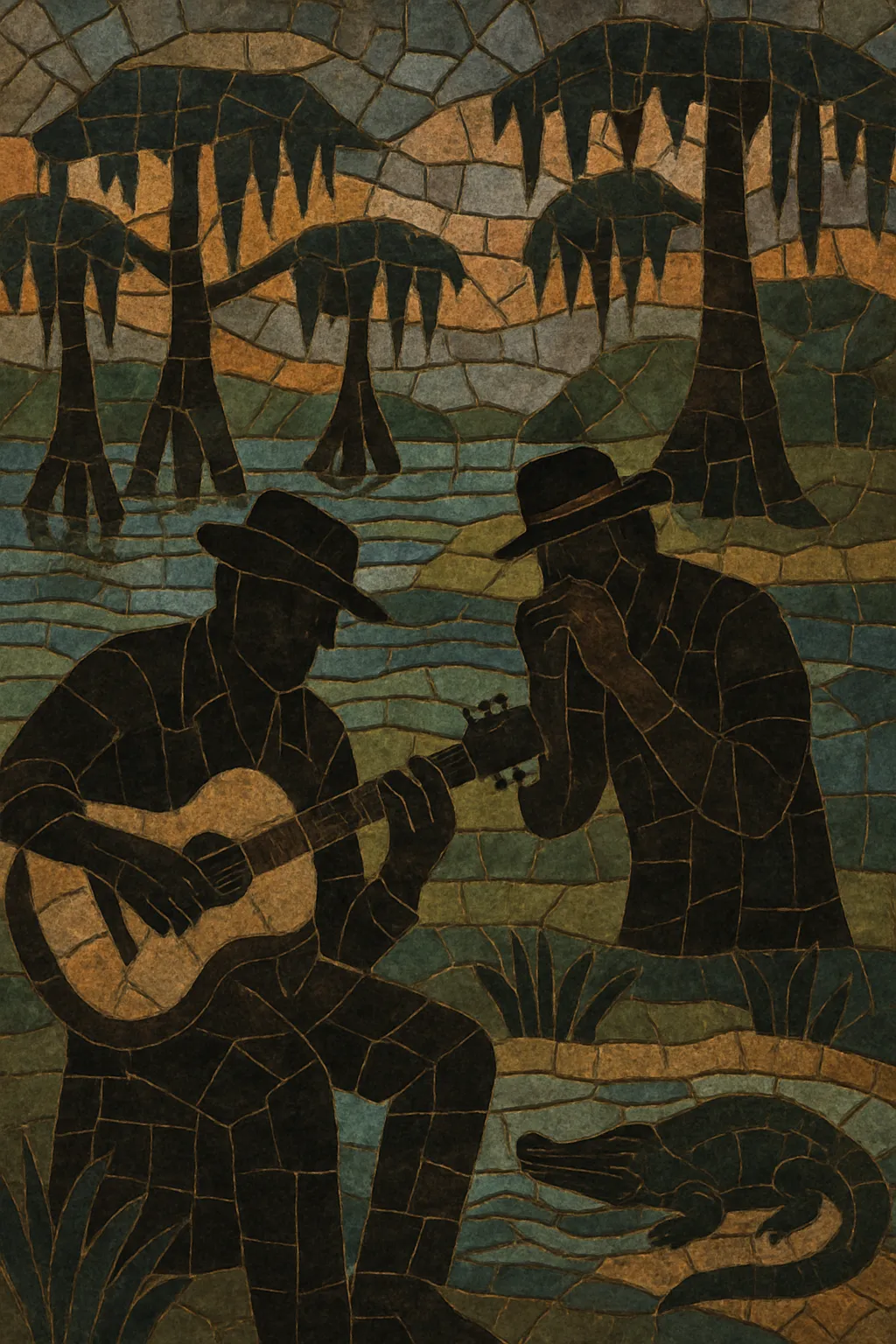
Swamp blues is a laid‑back, hypnotic offshoot of Louisiana blues that took shape in the 1950s around Baton Rouge and Crowley. It is marked by loping mid‑tempo grooves, tremolo‑soaked electric guitar, prominent harmonica riffs, and echo‑laden, lo‑fi production that evokes the humid, nocturnal atmosphere of the bayou.
Stylistically, it blends rural Delta blues structures with New Orleans R&B backbeats and subtle Cajun/zydeco accents. Records produced by J. D. "Jay" Miller for Excello Records defined the genre’s signature sound: minimal arrangements, space between parts, and swampy reverb that turns simple I–IV–V blues into a moody, rolling trance.
Swamp blues emerged in the mid‑1950s in south Louisiana, especially around Baton Rouge and Crowley. Local musicians brought Delta blues song forms and guitar vocabulary into contact with New Orleans rhythm & blues grooves, Cajun/Creole rhythms, and the region’s dance‑hall culture. Producer J. D. “Jay” Miller captured this hybrid at his Crowley studio, releasing it largely through the Nashville‑based Excello label. The resulting sound—tremolo guitar, amplified harmonica, shuffling drums, and generous tape echo—became known as “swamp blues.”
During its peak, artists like Slim Harpo, Lightnin’ Slim, Lazy Lester, Lonesome Sundown, and Silas Hogan cut a string of singles characterized by relaxed tempos, hypnotic riffs, and conversational vocals. The music remained faithful to 12‑bar blues and boogie feels, but the arrangements were stripped down and atmospheric, with minimal chord changes and lots of space. Excello’s distinctive production aesthetic—slapback, room sound, and harmonica up front—cemented the genre’s identity.
In the 1960s, swamp blues singles resonated with British R&B and rock bands. The Rolling Stones, The Kinks, and others covered Slim Harpo (“I’m a King Bee,” “Shake Your Hips”), spreading swamp blues’ grooves and textures into blues rock and, by extension, roots rock. This helped keep the repertoire alive even as mainstream tastes shifted.
Though commercial momentum waned by the late 1960s, reissue programs and blues revivals renewed interest. Baton Rouge venues (e.g., Tabby’s Blues Box) sustained local scenes, while later labels and festivals featured veteran and second‑generation players. Today, swamp blues is recognized as a quintessential Louisiana sound—bridging Delta traditions, New Orleans R&B, and Cajun/zydeco colors—and a key influence on swamp rock, British R&B, and blues rock.

